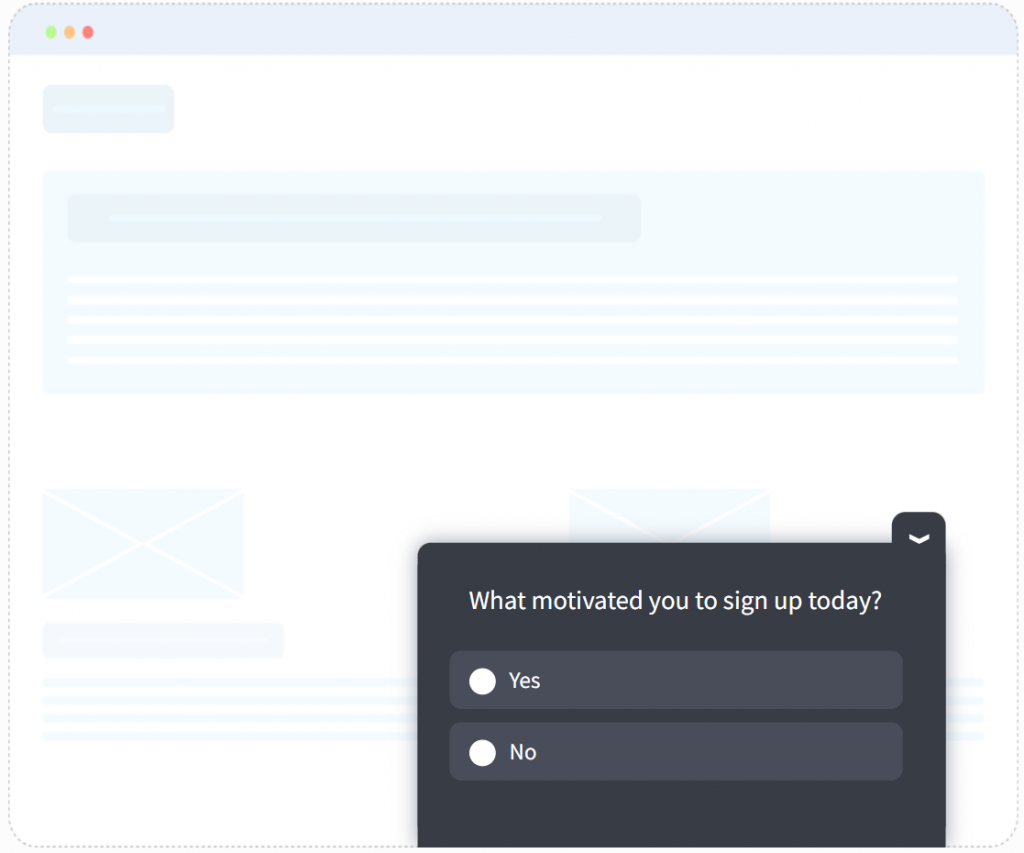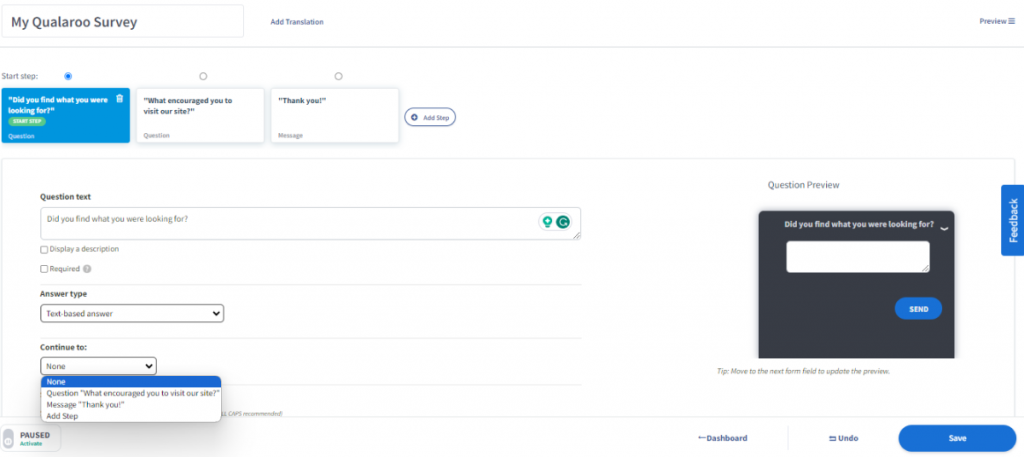This is the final installment of our recap of the Golden Questions that Reveal Why Your Visitors Aren’t Converting webinar with Dr. Karl Blanks and Sean Ellis. In this post, we’re recapping Sean and Karl’s answers to the questions asked at the end of the webinar. The webinar focuses on the power that asking the right questions can have in building a conversion rate optimization plan that moves the needle and gets real results for your business. If you’re looking to take your CRO efforts to the next level, definitely watch the webinar. If you’re just getting started with CRO, check out our Beginner’s Guide to Conversion Rate Optimization. In the Q&A they went deep on specifics about how to make the most of the questions you ask. Sean and Karl shared some awesome advice and insight you aren’t going to want to miss.
Q: What type of questions could we ask non-ideal customers using face to face or phone calls? I assume they are different questions.
Sean: There is definitely a place for face to face and telephone conversations in really getting to know customers on a deep level, particularly in early stage companies trying to validate the need for a product in the first place. Conversion Rate Optimization doesn’t matter if you don’t have a product that meets people’s needs in the first place, and a lot of times a face-to-face or telephone meeting that will reveal that.
Karl: The good thing is that they really are the same questions that you need to ask them. The medium by which you ask them makes no difference. Face-to-face allows you to explore detail, whereas when you’re on the web they’re people who are visiting your site so there’s the relevance, which is important. [At CRE], we do both.
Q: What is the expected response rate I should be getting on these popup surveys?
Sean: It really is all over the board. The benefit of the open ended question is that you’ll get a wider variety of answers, but it also tends to have a lower response rate than a pure multiple choice question. I’m currently running one on my project site growthhackers.com that’s getting a 20% response rate, which is actually on the high side.
Q: Using a Qualaroo survey on our sites, we asked “What questions do you have that need answered before you purchase?” And our in house team was concerned that it looked like an invitation to live chat. How do you get around this problem?
Sean: Well, that question can integrate with live chat, and I’ve personally found that to be really effective. But I haven’t heard that concern before. Qualaroo can route people based on a specific answer to a question, to a live chat session. I think with all of these things it’s about experimenting, and if you’re not yielding insights that matter and driving results directly in unit, then I would stop doing it.
Karl: I know you could just have a link to the live chat after the question, on Qualaroo’s thank you page.
Q: I love Qualaroo, but I can’t do a whole lot of customization to my site. Is there something that would work for me?
Karl: Yes. I guess the questions you should be asking would be about the parts of the site that are applicable to you. Even though you couldn’t change the sign in or registration process or anything like that, still most customer objections are about the specific product types or the content that you’ve created.
Sean: Exactly, and the messaging — there’s so much power in addressing concerns through messaging. I don’t know exactly what your limitations are, but I assume you should be able to change messaging even if you can’t change other elements of the site.
Q: How do regular expressions work?
Sean: Regular expressions are a powerful way to target Qualaroo surveys. We’ve been working hard to build out help content to get started with them as they pertain to deploying our on page surveys. View our regular expression help.
Karl: Robbin Steif from LunaMetrics created a really nice pdf about that. I’d recommend it to anyone—it’s worth everyone bookmarking it, because at some point you’ll come across regular expressions and it’s a really horrible fiddly subject, and Robbin does an amazing job of explaining it.
Q: What have you found to be the biggest customer objections for lead forms?
Sean: I think a lack of reason to fill out the lead generation form would probably be the biggest objection. I know of one company that’s doing a thousand leads a day doing Qualaroo, but they have a really compelling offer to fill out the form. Actually it’s Visual.ly—if you go to their site you can get a free infographic if you just fill out the form, that’s pretty compelling.
Karl: Also, any kind of low commitment works too. If you define what will happen during the consultation, for example calling it a “Free 20 Minute Consultation,” during which we’ll do xyz, then they realize it’s valuable and not a sales pitch. Anything you can do to reassure the person that it’ll be valuable, so if you can show the authority and credibility of the consultant, that’s worth a lot as well.
Sean: The other thing you might do is have them express a specific need, and then the lead gen form is how they fulfill that need. For example, on some of our flows we have “I’d like to schedule a demo,” and then they schedule a demo by filling out that lead gen form.
Q: Can you share your experience on how conversion drops when you’re running a survey that somehow interferes with user interaction on the site?
Sean: I personally have yet to see specific results where conversion rate dropped with Qualaroo, and part of it is that we really try to be unobtrusive. You’ve got surveys that pop over and take up the whole screen and take you out of the flow of using a website, but Qualaroo is pretty unobtrusive down in the bottom corner. I have seen a 20% boost from a survey, but anytime that I’ve been worried about it and tested it, it’s either been neutral or a boost.
Karl: You always need to keep in mind that even if it did somehow affect conversion rates negatively, it’s a moment of pain for a lifetime of gain. At some point you need to find out why visitors aren’t converting and if you’re not going to do it today, then when will you do it? At some point you have to make the site better, because that’s the future of the business.
Sean: Exactly. Because for me, the “It’s something else” option, when I start to see patterns there, I’ll add it as one of the choices. For example, one of the common responses for us was “I’d like to know more about what types of questions to ask with Qualaroo,” so I built a tutorial, added it as a link, and lots of people now go and view that tutorial. At first, no one’s expecting a survey to address their concerns, so it’s not weird to just say “Thank you for the feedback,” but as soon as you have addressed it, you can actually give them a link that resolves their concern.
And there you have it! Thanks for sticking around for this four part series. We hope you gleaned some valuable information that you’ll be able to use as part of your own optimization strategy. As always, thanks for your continued support of Qualaroo. If you’re still on the fence about whether Qualaroo can make a difference for you, sign up for our risk free, no obligation two week trial and find out why your visitors aren’t converting.
FREE. All Features. FOREVER!
Try our Forever FREE account with all premium features!

 We'd love your feedback!
We'd love your feedback! Thanks for your feedback!
Thanks for your feedback!





